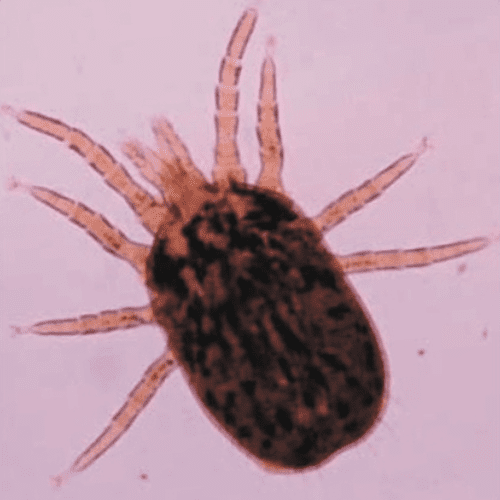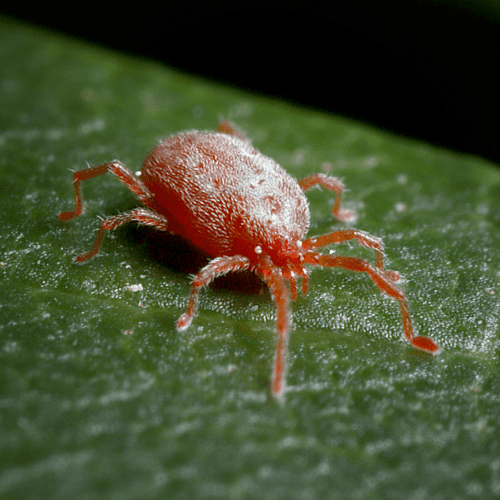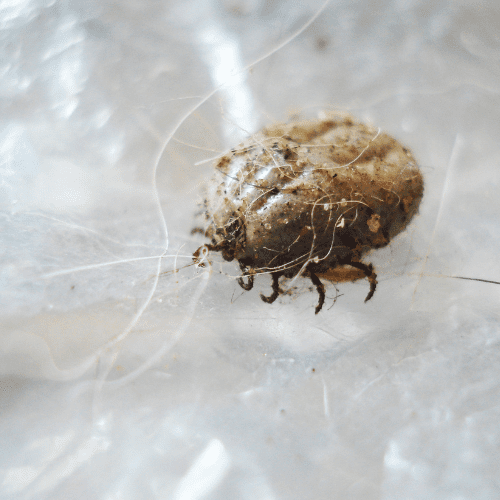


Bird mites are tiny parasites that feed on the blood of birds and mammals. They are known to infest homes and cause discomfort to homeowners. Understanding bird mites is essential for St. Louis homeowners, as these pests can cause a range of health issues and property damage.
St. Louis homeowners should be aware of the signs of a bird mite infestation. These pests are often introduced into homes through birds’ nests or dead birds. Once inside, they can quickly spread throughout the house and cause itching, redness, and other skin irritations. In addition, bird mites can cause respiratory problems, especially in people with asthma or allergies. Understanding how to prevent and control bird mite infestations is critical for St. Louis homeowners to maintain a healthy and comfortable living environment.
Identifying Bird Mites
Bird mites are tiny, eight-legged parasites that feed on the blood of birds. They are small and difficult to see with the naked eye, measuring only about 0.5 mm in length. Bird mites are usually brown or black in color, but can also appear translucent or white before feeding.
Characteristics of Bird Mites
Bird mites have a round body shape and are covered in tiny hairs. They have two pairs of legs near the front of their body and two pairs near the back. Bird mites are often mistaken for other types of mites or fleas, but can be identified by their small size, eight legs, and their tendency to feed on birds.
Common Habitats and Hosts
Bird mites are commonly found in the nests of wild birds such as sparrows, pigeons, and chickens. They can also infest homes and buildings where birds have nested or roosted. Bird mites can easily move from bird nests to human habitats, where they can cause irritation and discomfort to humans.
To identify bird mites, homeowners should look for signs of infestation such as itchy bites, redness, and irritation on the skin. Bird mites can also leave behind small, dark fecal pellets on bedding, furniture, and other surfaces. If homeowners suspect a bird mite infestation, they should contact a pest control professional for assistance.
In summary, bird mites are small, eight-legged parasites that feed on the blood of birds. They can be identified by their small size, eight legs, and tendency to infest bird nests and human habitats. Homeowners should look for signs of infestation and contact a pest control professional for assistance if necessary.
Life Cycle of Bird Mites
From Egg to Adult
Bird mites are tiny arthropods that feed on the blood of birds and mammals, including humans. They have a complex life cycle that consists of four stages: egg, larva, nymph, and adult. The life cycle of bird mites varies depending on the species and environmental conditions.
The eggs of bird mites are laid on the feathers or in the nests of birds. They hatch into six-legged larvae, which molt into eight-legged nymphs. The nymphs then molt into adult bird mites, which are about 0.5 mm in length. The entire life cycle may require one to two years, but under favorable conditions, it can be completed in as little as several weeks.
Survival and Longevity
Bird mites can survive for several weeks without feeding, but they require blood meals to molt and reproduce. Once they feed, they can survive for several months. Adult bird mites can live for up to two months, but they will die if they do not find a host to feed on.
Bird mites can be a nuisance to humans, as they can cause itching and skin irritation. Homeowners should take precautions to prevent bird mites from infesting their homes. They should seal any gaps or cracks in their homes to prevent birds from nesting, and they should remove any bird nests that are already present. If bird mites are found in the home, homeowners may need to hire a pest control professional to eliminate them.
Health Risks and Symptoms
Physical Symptoms of Mite Bites
Bird mites are tiny parasites that feed on the blood of birds, but they can also bite humans. When bird mites bite humans, they can cause a range of physical symptoms. The most common symptom is itching, which can be intense and persistent. The bites can also cause skin irritation, inflammation, and red bumps on the skin. Some people may experience a crawling sensation on their skin, as if something is moving on or under their skin.
Scratching the affected area can cause further irritation and may lead to a rash or open sores. In some cases, the bites may become infected, leading to pain, discharge, and secondary bacterial infection. It is important to avoid scratching the bites to prevent infection.
Potential Complications
While bird mite bites are generally not serious, they can lead to complications in some cases. People who are allergic to bird mites may experience more severe symptoms, such as anaphylaxis. In addition, bird mites can transmit diseases to humans, although this is rare.
If you experience symptoms of bird mite bites, it is important to seek medical attention. Your doctor can provide treatment to relieve itching and prevent infection. In addition, they can help you identify the source of the infestation and take steps to eliminate it.
Prevention and Early Intervention
Securing the Home Environment
One of the most effective ways to prevent bird mite infestations is to secure the home environment. Homeowners should take steps to seal up any cracks or crevices in the home’s exterior, especially around windows and doors, to prevent birds from entering. Additionally, homeowners should use a dehumidifier in areas where moisture is a problem, such as basements and bathrooms, to reduce the risk of bird mites and other pests.
Preventing Bird Mite Infestations
Preventing bird mite infestations requires early intervention. Homeowners should be aware of the signs of a bird mite infestation, which include itching, redness, and tiny bites on the skin. If an infestation is suspected, the homeowner should immediately take steps to remove any nests or birds from the home.
To prevent bird mite infestations, homeowners should also take steps to prevent birds from nesting in and around the home. This can be done by trimming trees and bushes near the home, removing any bird feeders, and covering any vents or openings in the home’s exterior. Homeowners should also discourage birds from preening near the home, as this can attract bird mites.
In the spring and early summer, when birds are most active, homeowners should be especially vigilant in preventing bird mite infestations. By taking proactive steps to secure the home environment and prevent bird mites from infesting the home, homeowners can avoid the discomfort and inconvenience of a bird mite infestation.
Treatment and Control Strategies
Home Remedies and Cleaning
Homeowners can take several steps to treat and control bird mites in their homes. One effective method is to vacuum frequently and dispose of the vacuum bag or contents immediately after use. It is also recommended to wash all bedding, clothing, and other washable items in hot water and dry them on high heat. Additionally, homeowners should clean and disinfect all surfaces, paying particular attention to areas where the mites are most prevalent.
Some homeowners may choose to use home remedies such as vinegar or essential oils to repel or kill bird mites. However, the effectiveness of these remedies is not well-documented, and they may not be as effective as professional pest control solutions.
Professional Pest Control Solutions
For severe bird mite infestations, homeowners may need to seek professional pest control services. A pest control professional can inspect the home and identify the source of the infestation. They can then recommend and implement appropriate treatment strategies to eliminate the mites.
Professional pest control companies may use a variety of methods to treat bird mite infestations. These methods may include the use of insecticides such as permethrin, diatomaceous earth, or other products specifically designed for bird mites. It is essential to follow the pest control professional’s instructions carefully to ensure the treatment is effective and safe.
In conclusion, homeowners can take several steps to treat and control bird mites in their homes. While home remedies may be effective for minor infestations, severe infestations may require the services of a professional pest control company. By following appropriate treatment and control strategies, homeowners can effectively eliminate bird mites and prevent future infestations.
Medical Treatment and Self-Care
When to See a Doctor
If a homeowner suspects they have bird mites, they should see a doctor. A doctor can diagnose the condition and recommend appropriate treatment. It is especially important to see a doctor if the homeowner is experiencing severe itching, swelling, or other symptoms.
Self-Care for Mite Bites
There are several steps homeowners can take to care for mite bites at home. The following self-care measures may help alleviate symptoms:
- Wash the affected area with a mild soap and cool water.
- Apply a cool compress to the affected area to reduce itching and swelling.
- Use over-the-counter antihistamines to relieve itching.
- Apply a topical steroid cream to reduce inflammation and itching.
- Use a coal tar shampoo to help soothe the scalp and reduce itching.
- Take an oral antihistamine to reduce itching and swelling.
If symptoms persist or worsen, homeowners should see a doctor for further evaluation and treatment. A doctor may prescribe a prescription-strength lotion or shampoo to treat the infestation. In severe cases, a homeowner may need to see a veterinarian if their pets are infested with bird mites.
Restless nights are common for those suffering from bird mite infestations. Homeowners can try using a body wash containing tea tree oil, which has been shown to have some effectiveness in treating mite infestations. It is important to remember that while self-care measures may help alleviate symptoms, they are not a substitute for medical treatment.
Understanding Bird Mite Behavior
Bird mites are tiny, wingless parasites that feed on the blood of birds, but can also infest human hosts, causing a nuisance. To better understand these pests, it is important to examine their feeding habits and behavioral patterns.
Feeding Habits and Host Interaction
Bird mites feed on the blood of birds, primarily pigeons, but can also infest other avian species. When bird mites are deprived of their primary food source, they may seek out human hosts, causing a mite infestation. Bird mites do not typically reproduce on human hosts, but can still cause discomfort through their bites.
When feeding, bird mites use their saliva to break down the skin and blood of their host, which can cause an allergic reaction in some humans. Bird mites live for approximately 7-10 days, and can survive for up to 3 weeks without a host.
Behavioral Patterns and Activity
Bird mites are most active during the night, when they emerge from their hiding places to feed. During the day, they retreat to dark, secluded areas such as cracks in walls, ceilings, and floors. Bird mites are sensitive to light, and will often avoid well-lit areas.
Behaviorally, bird mites are highly adaptable and can survive in a variety of environments. They are able to crawl quickly and can easily move between hosts and nesting sites. Bird mites can also survive for extended periods of time without a blood meal, making them difficult to eradicate.
Understanding the behavior of bird mites is crucial for effective pest control. By identifying their feeding habits and behavioral patterns, homeowners can take appropriate measures to prevent bird mite infestations and protect themselves from the nuisance caused by these avian parasites.
Differentiating Bird Mites from Other Pests
Comparison with Bedbugs, Ticks, and Lice
Bird mites are often mistaken for bedbugs, ticks, and lice due to their small size and similar appearance. However, there are several key differences that can help homeowners differentiate between these pests.
Bedbugs are typically reddish-brown in color and have a flat, oval-shaped body. They feed on human blood and are commonly found in mattresses, bedding, and furniture. In contrast, bird mites are gray or brown in color and have a more elongated body shape. They feed on the blood of birds and can be found in bird nests, as well as in homes that are infested with birds.
Ticks are also blood-feeding pests that are often confused with bird mites. However, ticks are typically larger in size and have a more rounded body shape. They are commonly found in wooded areas and can transmit diseases to humans and animals.
Lice are another blood-feeding pest that can be mistaken for bird mites. However, lice are typically smaller in size and have a more flattened body shape. They are commonly found on humans and animals, and can cause itching and irritation.
Identifying Misconceptions
There are several misconceptions about bird mites that can lead to confusion and misidentification. One common misconception is that bird mites can only infest homes that are infested with birds. While bird mites are commonly found in bird nests, they can also infest homes that are not infested with birds. This can occur when birds enter homes to seek shelter or when bird nests are located near windows or other openings.
Another misconception is that bird mites are minute in size. While bird mites are small, they are not the smallest of all mites. Some species of mites, such as the chicken mite, are even smaller than bird mites.
It is important for homeowners to be able to identify bird mites and differentiate them from other pests in order to effectively control infestations. By understanding the key differences between bird mites, bedbugs, ticks, and lice, homeowners can take the appropriate steps to protect their homes and families from these pests.
Chemical Treatments and Safety
Effective Insecticides for Bird Mites
When it comes to controlling bird mites, chemical treatments are often the most effective option. Two commonly used insecticides for bird mites are permethrin and ß-cyfluthrin. Permethrin is a synthetic pyrethroid that is highly effective against bird mites. It works by disrupting the nervous system of the mites, leading to paralysis and death. ß-cyfluthrin is another synthetic pyrethroid that is also effective against bird mites. It works by disrupting the nervous system of the mites, leading to paralysis and death.
Another commonly used insecticide for bird mites is deltamethrin. Deltamethrin is a synthetic pyrethroid that is highly effective against bird mites. It works by disrupting the nervous system of the mites, leading to paralysis and death.
Safety Precautions and Usage Guidelines
While chemical treatments can be effective, they can also be dangerous if not used properly. It is important to follow all safety precautions and usage guidelines when using insecticides. Some important safety precautions and usage guidelines to keep in mind include:
- Always wear protective clothing, including gloves and a face mask, when applying insecticides.
- Do not apply insecticides in areas where food is prepared or consumed.
- Keep children and pets away from areas where insecticides have been applied.
- Follow all instructions on the insecticide label, including dosage and application instructions.
- Store insecticides in a safe, secure location away from children and pets.
By following these safety precautions and usage guidelines, homeowners can effectively control bird mites while minimizing the risk of harm to themselves, their families, and their pets.

